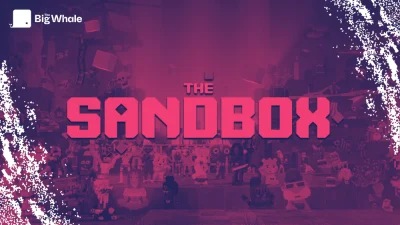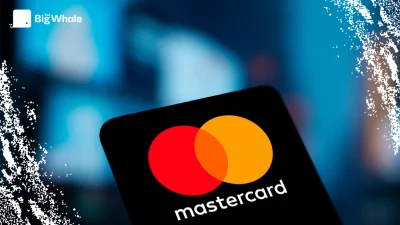The Big Whale: What is Mastercard's overall strategy in crypto-assets?
Christian Rau: Our strategy hasn't changed in 50 years: enable people to pay, and businesses to be paid, securely, simply and compliantly. This principle remains true, whatever the means of payment used. Our role is to provide security and fluidity, whether you're buying a pair of shoes with your bank card or using digital assets like USDC stablecoin. And as the world goes digital, we need to keep up with these developments, to continue to meet the expectations of users, merchants and financial institutions.
What we are doing today in crypto is in line with this logic. We don't see cryptos as a total disruption, but as one potential payment technology among others. Our mission is to expand the field of possibilities, provided that the minimum conditions for security, compliance, consumer protection and user experience are met. It's not a question of reinventing the system, but of enriching it. If digital assets can improve payments, then we have every interest in integrating them into our network.
>> The Big Whale Report - How payment specialists are integrating digital assets
What are the concrete services you are offering today in crypto?
We are involved at several levels. The first is access. A large number of users want to convert their euros or dollars into digital assets on exchange platforms. This is known as on-ramp. We allow them to use their Mastercard to buy cryptos, just as if they were buying a Spotify subscription. This is not anecdotal: making this step seamless is essential for adoption. In many countries, notably in Europe with MiCA, this is becoming possible in a regulated way. At the other end of the chain, we also enable off-ramping: once users have sold their digital assets, they can receive the funds directly onto their card. As long as it remains a transaction between him and himself, it's totally authorised.
But our business doesn't stop there. We have also developed payment solutions with cards backed by crypto accounts. This means that a user can spend their digital assets in a shop like Carrefour, using a card issued by a partner, such as Bitget or MetaMask. The principle is simple: at the time of payment, the platform sells a small quantity of cryptos to generate the exact amount in fiat, which is then transmitted via the Mastercard network. It's totally transparent for the merchant, who receives euros, and for the consumer, who keeps his cryptos until the last moment. This model allows crypto to be used as a universal means of payment, without forcing merchants to accept bitcoin or ether directly.
>> Analysis : Mastercard's crypto strategy
"Cards linked to non-custodial wallets are much more complex" What difference do you make between cards backed by centralised exchanges, such as those from Kraken or Coinbase, and those connected to self-custody wallets like MetaMask?
Cards linked to centralised exchanges, such as those offered by Kraken or Coinbase, work like traditional bank cards. Users hold their money on the platform, which acts like a bank. They have already gone through KYC procedures, and it is the exchange that manages the conversion and transaction. This model is tried and tested, relatively simple to deploy and complies with existing regulations. That's why it was the first to emerge.
Cards linked to non-custodial wallets are much more complex. With MetaMask, for example, we had to create an architecture where the user delegates authorisation over his funds in advance. When they pay, a smart contract checks that they have enough USDC available and executes a transfer in real time. The payment processor (e.g. Monavate) is responsible for synchronising this authorisation with the Mastercard network. We have to be extremely rigorous to ensure that the funds are still there before approving the transaction, while respecting the philosophy of self-custody. It's a technological challenge, but also a regulatory one, as we're touching on compliance, AML/KYC, and UX issues.
>> Crypto payment cards: the 2025 comparison
Can you explain in more detail how these work?
When a user holds their funds on a non-custodial wallet, such as MetaMask, this means that they are the sole master of their private keys, and no centralised entity holds the assets for them. In this context, there is no 'account' in the banking sense of the term to which the card can be linked. For payment to work, an authorisation delegation system must be set up. In practical terms, the user must first authorise an intelligent contract to access their funds, within a certain limit, and to initiate a transaction on their behalf. When they pay with their card (in a supermarket, for example), an authorisation request is sent to the issuer (often a fintech such as Monavate), which converts it into an on-chain transaction. If the conditions are met (sufficient balance, valid authorisation, limit not reached), the smart contract triggers the conversion and validates the payment.
All this is done in real time, in a matter of seconds, and invisibly for both the merchant and the Mastercard network. But there is considerable complexity in the background. The validation of the traditional network has to be synchronised with that of the smart contract, while guaranteeing that the funds have not been moved in the meantime. KYC/AML mechanisms also need to be integrated to ensure regulatory compliance, which is more difficult in a self-custody environment. And of course, the user experience has to be as seamless as that of a traditional bank card, without going through 15 stages of configuration. This is why these products are still in their infancy, often in beta version, but they are paving the way for a future where non-custodial wallets will no longer be limited to DeFi or trading, but will become genuine global payment instruments. At Mastercard, we are actively working with these partners to set the standards for this new generation of cards.
In addition to cards, you offer other services in the blockchain, such as Crypto Credential or MTN. What are these?"
Crypto Credential is our initiative to make digital asset transfers safer and more convenient. Today, if I want to send you crypto, I have to copy a long unreadable address. With Crypto Credential, we want to make it possible to send funds using an alias, a bit like a simplified IBAN. On top of that, the system checks that the recipient's wallet can actually receive the asset I'm sending, to avoid errors. It's a service that improves the user experience while incorporating compliance mechanisms, particularly those linked to the Travel Rule.
MTN, for Multi-Token Network, is our interoperability network project. The idea is to enable banks, stablecoin issuers, public institutions and fintechs to connect to each other via a common infrastructure based on blockchain. This network could eventually enable the exchange of tokenised bank deposits, regulated stablecoins and even central bank digital currencies. We have tested it in several countries and use cases, including for programmable payments, with stablecoins on public blockchains such as Ethereum. It's not yet in production, but it's an important building block in our long-term strategy.
The development of payment cards for EtherFi or MetaMask has led many experts to say that Mastercard is ahead of Visa. How do you explain this?
I won't comment on the other players. What I can say is that we took the decision very early on to be a real partner for the Web3 ecosystem. That doesn't just mean providing technology. It also means understanding the culture of crypto players, their agility, their expectations, and helping them navigate a world where financial services are heavily regulated. A wallet that launches in Singapore on a Monday, in Dubai on Tuesday and in Paris on Wednesday needs support to integrate all the legal, technical and commercial constraints.
We have mobilised resources in every division of the company: product, compliance, business development, communications. We set up dedicated teams, capable of talking to Ethereum developers as well as a bank's legal department. This ability to bridge two worlds is essential. It enables us to co-create with players like MetaMask, but also to convince regulators and banks that these innovations can be integrated into a secure and proven framework.
>> EtherFi: What is the relevance of the business model of this DeFi neobank?
"Stablecoins do not replace all the services we provide" Stablecoins have overtaken Mastercard in transaction volume in 2024. Is this a threat?
I think we need to distinguish between the types of volume. A large proportion of stablecoin transactions today are transfers between platforms or institutions - for arbitrage, liquidity management or lending. These are very valid uses, but they do not necessarily correspond to payments between a consumer and a merchant, such as those we handle. That said, the trend is there, and that's a good thing. It shows that stablecoins are gaining legitimacy.
At Mastercard, we see stablecoins as a settlement technology. They can help us speed up payments, reduce currency risk, and improve cross-border payments. However, they do not replace the full range of services we provide. If you buy a bike on a site in Portugal using your card and you don't receive it, you have recourse. With a stablecoin transfer, you have none. This is where our added value remains very strong.
>> Dashboard - Stablecoin volumes vs traditional payment systems
Do you think that stablecoin payments will one day be able to offer the same level of protection as traditional payments?
This is a crucial question. Today, a stablecoin payment, especially if it takes place on a public blockchain, is generally irreversible. If you get the wrong address or the seller doesn't deliver, you have no recourse. This is not to say that stablecoin is a bad tool, but that it lacks a whole legal and technical environment that traditional networks like Mastercard have taken decades to build. Payment is not just a transfer of value, it's a set of guarantees, support services and dispute procedures. These functions are not visible on a daily basis, but they are essential to trust.
That said, we are working on hybrid models. Nothing prevents us from imagining that the initial transaction is carried out in stablecoin, but that a new transaction is triggered a posteriori by the Mastercard network in the event of fraud or dispute. This would not be an on-chain transaction 'cancellation', which is difficult, but rather a counter-transaction orchestrated via the usual intermediaries: the card issuer, the acquirer and the merchant. This is the type of infrastructure we are trying to build with our partners, to bring to Web3 what has made traditional payment systems so successful.
Blockchains like Solana promise 70,000 or even 1 million transactions per second (TPS). Do you feel threatened by this technical performance?
These technical advances are real and very impressive. Blockchains are making rapid progress, particularly in terms of scalability. But we need to put the figures into context. Our Mastercard network currently processes around 5,000 transactions per second, and we still have room for improvement. This figure does not reflect a technical limit, but rather an operational average. We have built an infrastructure capable of absorbing massive volumes resiliently, with very high levels of availability and security. So the issue is not just speed, but the whole environment around it.
The fundamental difference between a network like ours and a public blockchain is everything that surrounds the transaction: anti-fraud control, AML/KYC compliance, dispute resolution mechanisms, identity management, and above all global acceptance. Making a million transactions a second is all very well, but there still needs to be an acceptance network to enable consumers to interact with a merchant, in any currency, with customer support. This is where Mastercard remains very well positioned. And of course, we are keeping a close eye on technical advances in blockchains, as certain technological bricks could eventually be integrated into our own infrastructure.
"Disruptive innovations can lead to the emergence of new champions, without wiping out the old ones" Can solutions such as Lightning Network or Solana Pay, which are sometimes very cheap and fast, threaten your model, particularly for cross-border payments?
It would be irresponsible to underestimate them. Some of these solutions are very effective, particularly in contexts such as Africa or Latin America where traditional networks are less present or less competitive. But we need to distinguish between two things: the technology on the one hand, and the global payment ecosystem on the other. Just because a transaction is fast and cheap doesn't mean it meets all the requirements in terms of compliance, traceability, security, customer support or currency conversion. And even in the case of Lightning, payment channels, liquidity, risks of desynchronisation need to be managed...
On the other hand, history shows that disruptive innovations can lead to the emergence of new champions, without wiping out the old ones. Mastercard itself emerged at the time of the transition from cash to cards. We don't underestimate our competitors, but we don't see their potential success as a 'threat'. It is an incentive for us to remain innovative, to cooperate with the best Web3 players and to adapt our infrastructure to new uses. We already have partnerships with players such as MoonPay, MetaMask, Bitget or Chainlink, and we are always looking for mixed models that combine the power of blockchains and the solidity of our network.
Do you see a real financial impact of these crypto projects on Mastercard's revenues?
Today, we do not disclose precise figures on this activity in our quarterly results. But yes, it is a business that is growing and already has a significant weighting, even if it remains modest compared with our traditional volumes. Where the impact is perhaps most visible is in the new growth drivers that this opens up. Crypto cards, stablecoins, decentralised cross-border payments: these are all new flows that we would not otherwise have been able to capture. And the more the crypto ecosystem develops, the more we have an interest in being part of it.
But beyond the immediate impact, it's a question of strategic positioning. If you had asked me ten years ago whether electric vehicles would make Mercedes any money, the answer would have been no, not right away. Today, however, they are an essential part of their business. It's the same for us with crypto. We're not just interested in it for the immediate profitability, but because we think these technologies will be an integral part of the future of payments. And if we understand them, if we help structure them, we'll be ready when the market reaches critical mass.
Stripe is reportedly considering launching its own blockchain. Is this also an option for Mastercard?
Personally, I am not aware of any internal project of this type at Mastercard. That's not to say that the idea is absurd. But our approach is a little different. We are historically an infrastructure company that values interoperability. We believe that there are already a large number of public or private blockchains on which we can build useful services, without necessarily creating a new one. What matters to us is that the technology we choose meets our requirements for compliance, security, resilience and user experience.
That said, we're not barring ourselves from anything. If one day it proves relevant to develop a blockchain, because no existing solution meets the needs of our network or our partners, then we will consider it. But for the time being, we prefer to work with our partners, whether they are fintechs, protocols or issuers, to build tailor-made solutions. Innovation does not necessarily mean owning the entire chain, but rather being able to federate, connect and orchestrate the best available building blocks. That's what we've been doing for 50 years, and what we'll continue to do with crypto.
>> The crypto strategy of Stripe, the new industry giant
>> John Egan (Stripe): "We want to build a global network for payments and cash"








